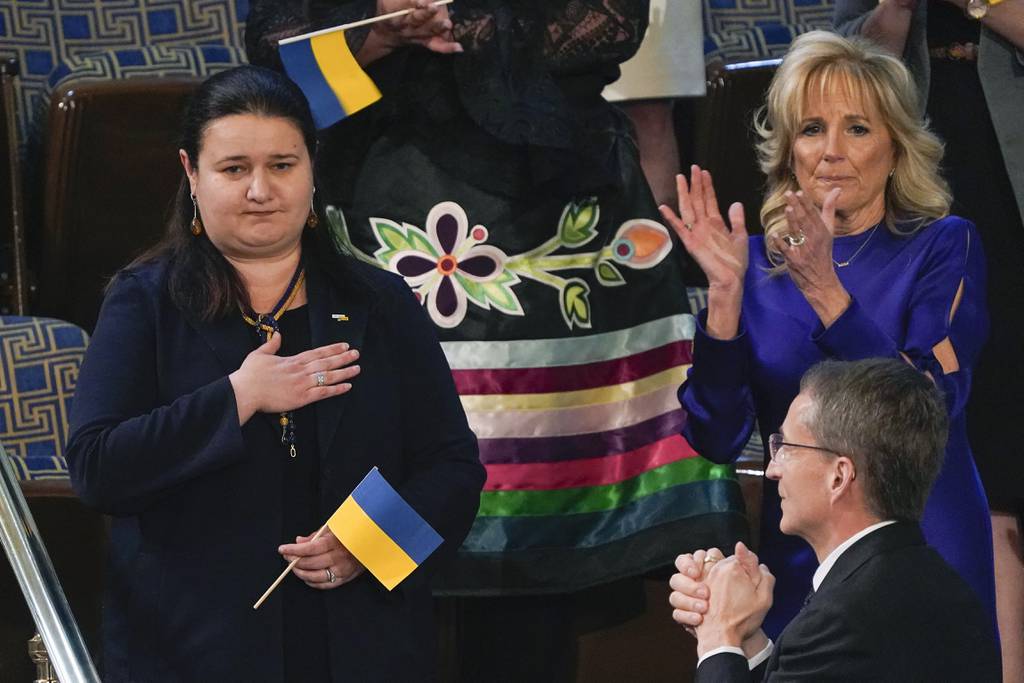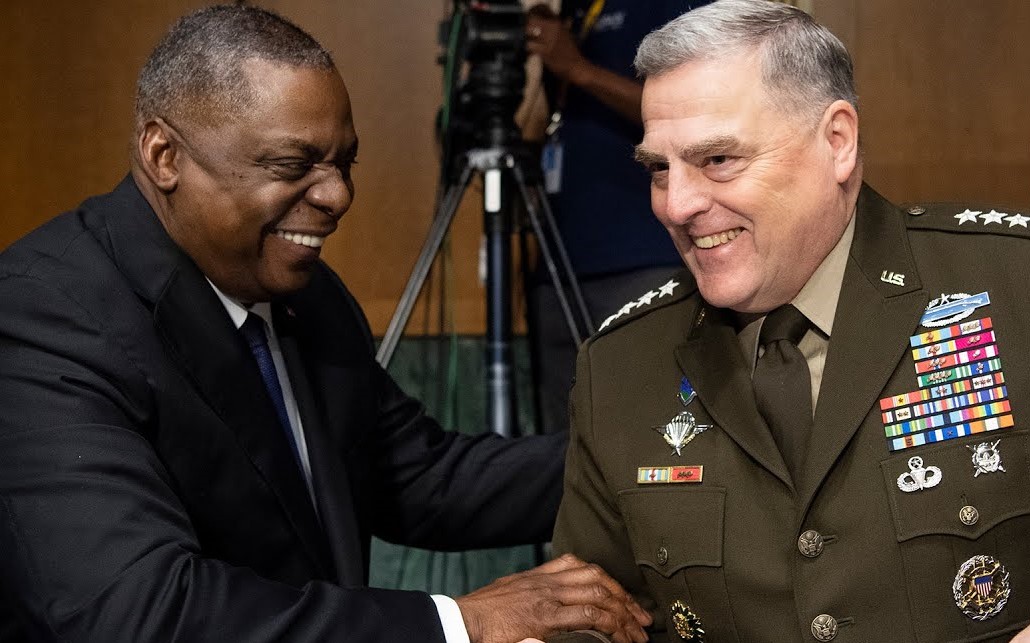Biden’s trip to Europe: between unity and escalation
One month after the start of Russia’s invasion of Ukraine, US President Joe Biden went to Europe seeking to maintain unity in the transatlantic response to the war, managing the difficult task of escalating without approaching the line that could trigger a direct conflict between NATO and Russia. It is a balancing act that the president has been able to manage thus far. However, there are evident risks in the strategy, as the trajectory of the crisis has shown over the past year.

The political discussion inside the United States has been fairly one-sided over the past month. Most of the positions in Washington range from arming Ukraine to arming Ukraine even more, with some discussion on how far to push economic measures to further isolate Vladimir Putin. There is little criticism of the US response on substance, with the exception of a few senators who have a history of highlighting hypocrisy in foreign policy, such as Rand Paul, Elizabeth Warren and Bernie Sanders. There have also been predictable attempts by the Republican Party to use the war in Ukraine as part of a general campaign to paint Biden as weak and feckless. Meanwhile, some on the right are taking the opportunity to bring back the Hunter Biden laptop story – aided by accusations from Russia on alleged financing of biolabs – to harp on the president’s conflicts of interest while relitigating the 2020 election.
On core US policy towards Ukraine, though, there is considerable agreement for now, and among the Washington institutions, one of the main goals since the beginning of this crisis has been to restore unity between the United States and Europe after the Trump years. Pursuing this aim, the Biden administration has been successful in countering Moscow’s desire to exploit different views in the alliance, based on different perceived interests. In line with their position over the past eight years, it initially seemed that the largest players in Europe – Germany, France and Italy – were reluctant to move forward decisively to cut economic ties with Russia. However, it took only a few days for everyone to get on board with the harsh sanctions drawn up by Washington to exclude Russian banks from the SWIFT system, and even more notably, to freeze the Central Bank’s reserves.
There are still aspects of realism and necessity: some of France’s largest companies maintain operations in Russia, energy imports are needed while Europe develops alternative supply sources, and the US itself is quietly holding back in some areas, such as agribusiness where food supplies from the area are crucial for markets around the world. The Biden administration is working to strengthen the Western alliance system on this front as well, as exemplified by the push to provide Europe with as much Liquid Natural Gas as possible to facilitate the transition away from energy dependence on Russia.
Read also: Eight simple rules for navigating the new Russian-European highpolitik
Yet, in the current climate, even these measures risk being seen as insufficient. The last-minute decision to invite Ukrainian President Volodymyr Zelensky to address the NATO summit produced a scramble to announce new measures against Russia, to avoid being seen as cheering from the sidelines without providing enough help. Meanwhile, the Ukrainian president is not shy in requesting more military equipment, with measures that seem appropriate to Eastern European states – consider the case of the Polish MiGs – but bring a tepid response from Washington and Western European capitals, wary of shifting from outside aid to more direct involvement.
Here Biden’s position is a bit precarious, as the administration’s strong anti-Moscow posture risks raising expectations regarding NATO’s response to Russia’s invasion, a response that Biden knows must remain within strict confines in order to avoid the risk of a potentially catastrophic escalation.
The disconnect here is between the forceful rhetoric accusing Putin of war crimes and suggesting that Russia can be stopped militarily, and the recognition that actions such as sending aircraft, or considering the possibility of a no-fly zone, would represent a qualitative shift in the situation, going from what until now has taken the form of a war of resistance with significant outside help, to a direct confrontation that could lead to a broader and unpredictable conflict.
The US administration has been careful to clearly state its red lines: from the start, Biden has stated that NATO will only defend the members of the alliance, and not enter into war with Russia. In his Warsaw speech, the president seemed to take it a step further with his comment that Putin “cannot remain in power,” but the White House and the State Department quickly walked back the remark, assuring that it did not indicate any intention of regime change.
Moreover, US Secretary of Defense Lloyd Austin and Chairman of the Joint Chiefs of Staff Mark Milley have sought to create a dialogue with their Russian counterparts to ensure strategic clarity between the two sides, beyond the lower-level deconfliction channel in place. They have been unsuccessful though, keeping alive the fear of an incident or misunderstanding at the local level that could lead to a “rapid and irreversible escalation, to include potential use of nuclear weapons,” as put by former Supreme Allied Commander of NATO James Stavridis.

The worry that the US is moving too close to the line of conflict has led to conflicting takes on the war in Ukraine among the American establishment. Most notably, an anonymous Defense Intelligence Agency analyst was quoted extensively in a Newsweek article on March 22nd countering the narrative that Putin is openly targeting civilians in the war. The piece starts as follows: “As destructive as the Ukraine war is, Russia is causing less damage and killing fewer civilians than it could, US intelligence experts say.” The author goes on to explain that while there is unprecedented destruction in some areas of the country, it is important to understand Russia’s actual conduct. Convincing ourselves that Russia is bombing indiscriminately means we are not seeing the real conflict, one in which “perhaps [Putin] is mindful that he needs to limit damage in order to leave an out for negotiations.”
Read also: L’impatto globale del tragico errore di Putin
The appearance of the article contradicting the dominant view in Western media was startling, and can easily be interpreted as a warning that the administration needs to keep the possibility for negotiations open. Until now, this track has been relegated to third countries while the US and Europe – with the exception of the diplomatic sorties by French President Emanuel Macron – concentrate on raising the costs of the conflict for Russia and exploring the advantages that can be gleaned from weakening Putin and creating uncomfortable dilemmas for Xi Jinping.
The paradox of how to talk tough while avoiding escalation is linked to the overall diplomatic strategy followed by the Biden administration in the months leading up to the war. Despite the launch of the “Strategic Stability Dialogue” between the two countries beginning in June 2021, Putin decided that Ukraine was moving towards a point of no return, and sought to obtain concessions from the US under the pressure of a massive troop buildup near the border. The administration chose to keep Putin off balance, with a psychological game in which it openly revealed intelligence about a potential invasion, rather than seeking compromise. There was plenty of skepticism in Europe at the time, with many wondering if Biden was playing with fire by openly calling Putin’s bluff. It ultimately became clear that Russia was not bluffing, and the White House was proven right in its predictions. Yet this also raises a thorny dilemma about the risks of backing Putin into a corner, not knowing how he will react if he sees no way to claim victory.
In the US the criticism of policy toward Russia has, for the most part, been limited to the academic world and minor journalistic publications. That remains the situation today, with figures such as scholar John Mearsheimer repeating his well-known critique of NATO expansion, but with no effective counter to the institutional and media pressure on the White House to continue to raise the stakes.
In assessing the strategic situation at the time of Biden’s trip to Europe, conservative commentator George Will – not one who can be accused of sympathies for the Russian president – summed up the dilemma that some in Washington are beginning to pose, while Biden works to maintain unity and re-invigorate NATO: “How much embarrassment can Putin suffer without taking a catastrophic step — use of a tactical nuclear weapon?”
As the United States pushes Europe to fully embrace the paradigm shift represented by the Russian invasion of Ukraine, the question is whether Washington has an idea of the end-game, beyond pursuing geopolitical advantages in a period of great power competition.
